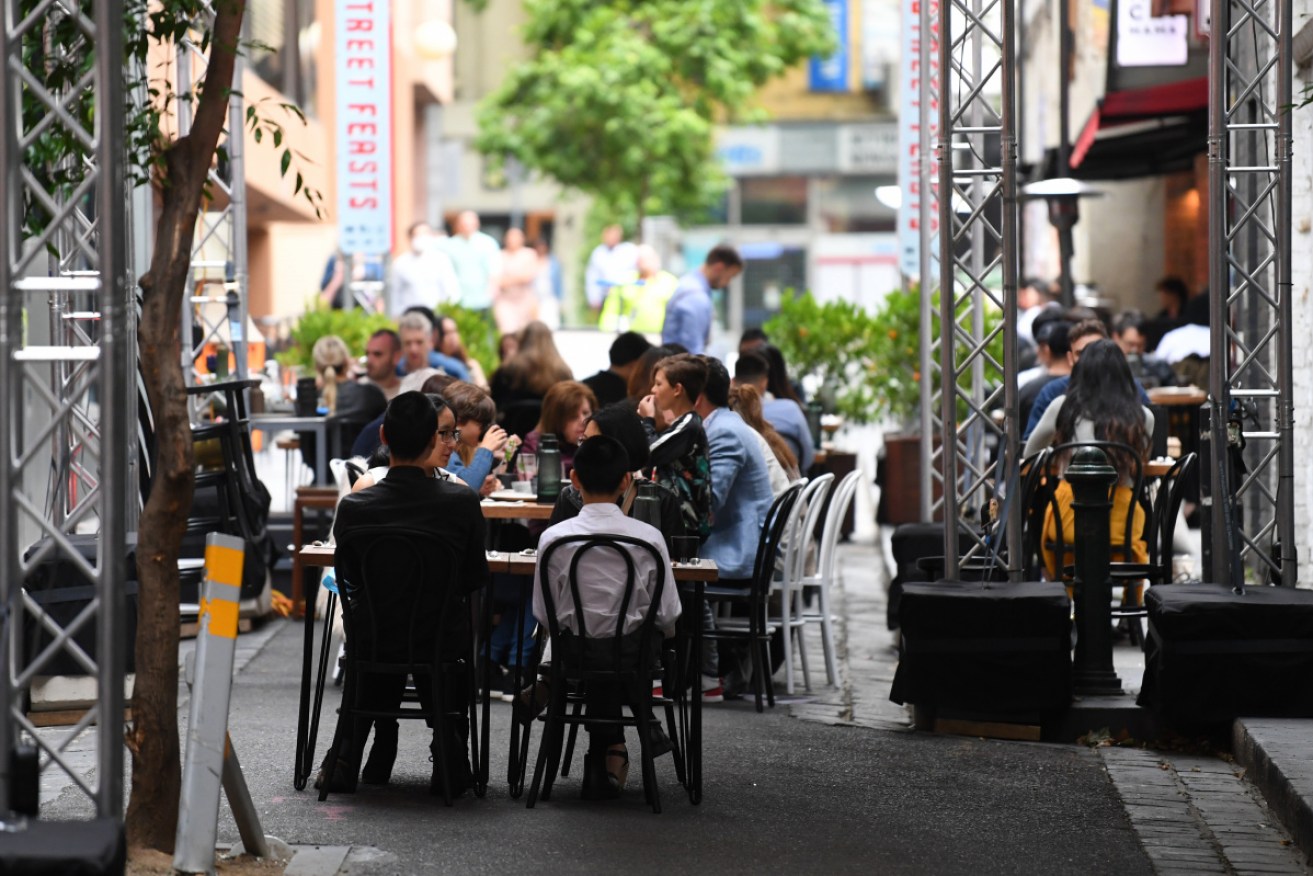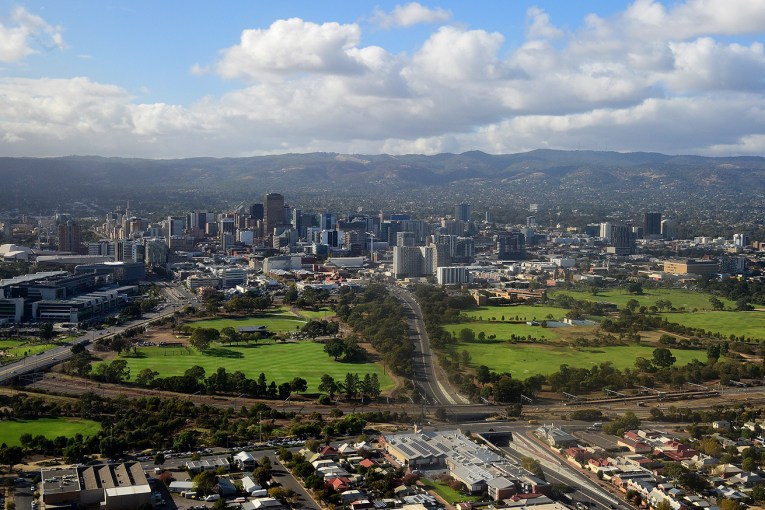Australia’s economy is now larger than before COVID. Here’s why


Spending from households and businesses will drive our economic recovery from here on. Photo: AAP
It’s official: Australia has staged its fastest recovery from a recession in 45 years.
The economy is now 1.1 per cent larger than a year ago after real GDP rose by 1.8 per cent in the March quarter, the ABS said on Wednesday.
The result puts Australia among a group of just five other nations to have emerged from the worst economic shock in nearly a century with higher levels of production.
And in a sign that governments have passed the baton to households and businesses, the data showed growth in the first three months of the year was driven by the private sector, with household spending and private investment accounting for 88 per cent of March quarter growth.
“The recovery is on much firmer footing now then it was even three or six months ago,” Indeed APAC economist Callam Pickering told TND.
“We’ve transitioned from primarily relying on government spending towards the household sector and business sector really driving us.”
After federal and state governments stepped in to keep the economy going during the pandemic last year, general government expenditure actually had a slightly negative impact on GDP growth in the March quarter.
But that doesn’t mean the government has stopped contributing.
Business aid recession recovery
As EY chief economist Jo Masters explained, the effects of policies like the instant asset write off and loss carry back measures were clearly seen in higher business investment.
Private investment (business investment + dwelling investment) accounted for 55 per cent of total growth, which was three times higher than the December quarter.
“Government support is still elevated … it’s not surprising that as it starts to wind down you’re not getting a contribution,” Ms Masters said.
But what remains unclear is whether the jump in investment simply reflected a bringing forward of demand as a result of the extra incentives, Ms Masters told TND.
And if that is the case, it is only likely to be a temporary boost.
“Business investment is recovering faster than we’ve seen in previous recessions, but within private business investment it’s not very broadly spread,” she said.
“The growth was really all the surge in new machinery and equipment investment, up 10.3 per cent in the quarter, [and] that suggests there’s clearly a response to the government’s [policies].”
Independent economist Saul Eslake said the extra business investment should be a positive for workers, because it suggests they are making changes that will boost productivity and hopefully wages growth as a result.
“The main factors are probably things like digitisation and doing what you have to do to operate in a COVID-safe world,” Mr Eslake said of the investment drive.
“The other driver is expectations about future customer demand.”
Household demand shifts
In other words, businesses are busy changing their models to cash in on the post-COVID environment as consumer spending picks up.
And on that front, economists said things are looking positive.
Household spending rose 1.2 per cent in the March quarter, thanks to higher levels of disposable income, which more than offset lower levels of government support (as the below graph demonstrates).
Crucially, the data is just an aggregate figure though, which means it hides differences across different incomes.
And consumption is still behind pre-pandemic levels – something economists attributed to a mixture of caution and changing spending habits.
Mr Eslake said transport spending was down 76 per cent on pre-COVID levels, accounting for the majority of the consumption shortfall.
But he said households “still have the capacity to spend because the savings rate is historically high, [as] consumers have socked away a lot of cash because their incomes haven’t suffered”.
The household savings rate fell from 12.2 per cent to 11.6 per cent, but that’s still three times higher than 2018 and 2019 levels.
Australian economy: Vaccines the big risk
Moving forward, the key question for the economy is whether it can sustain higher rates of growth than it could before the pandemic, something that will depend on a continued acceleration in consumer spending and business investment.
That’s because now that the government has largely passed the baton on to households, we’re relying on their confidence in the health situation.
Tweet from @JEChalmers
After all, government pandemic support was aimed at keeping the economy going, not making it more productive or equitable.
“The easy wins in terms of boosting growth by easing restrictions domestically are behind us,” Ms Masters said.
“To drive growth going forward, you have to find new restrictions to ease, and the obvious one is keeping domestic borders open and, over time, opening international borders.
“So vaccines will be important.”
And increasingly so, when it comes to how Australia will compete on the global stage, according to Mr Pickering.
“The economy is in a reasonably good situation, but that can change depending on how we handle the vaccine rollout,” he said.
“We’re seeing that first hand in Victoria right now.”








